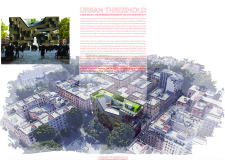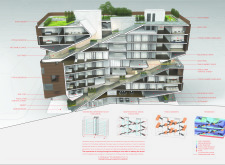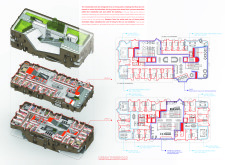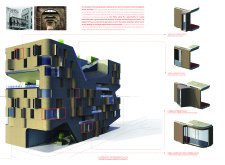5 key facts about this project
The project located in Testaccio, Rome, responds to the pressing need for affordable housing in urban areas. With the cost of living in major cities on the rise, it offers a solution that promotes community living. The design integrates residential units with shared spaces in a way that encourages social interaction. Overall, the design concept focuses on creating a friendly atmosphere where pedestrians can easily navigate and engage with each other and their environment.
Design Concept
The design aims to connect the building directly to the lively streets of Testaccio. Instead of typical high-rise structures, it features a layout that resembles the experience of walking through a neighborhood. This design choice fosters interactions among residents and makes the space feel more open and accessible. By prioritizing community, the project helps break down barriers between people and spaces.
Co-Living Spaces
Units in the building are developed as co-living spaces, allowing residents to share not only their homes but also essential amenities. This approach moves away from individual ownership, which can create isolation. Instead, there are shared kitchens, living rooms, and dining areas, along with public spaces such as a fitness center, café, roof garden, and retail stalls. These shared facilities promote a sense of belonging and provide a platform for social engagement.
Materiality and Facade
The facade of the building draws inspiration from Rome's architectural traditions, featuring curvilinear forms that reference local brickwork. This connection to the city's history adds character and warmth to the design. The use of pre-fabricated brick units that are hung from precast concrete decking contributes to efficiency while ensuring alignment with traditional building practices.
Integrating Community Interaction
Communal spaces are thoughtfully placed throughout the building, designed to encourage interaction not only among residents but also with the public. These areas provide opportunities for everyone to come together. By making amenities accessible to both residents and visitors, the project helps create a lively environment. Revenue generated from these spaces can assist in lowering living costs for residents.
The careful design of the facade, with its inviting forms and integration of public areas, encourages engagement with the building while respectfully referencing the historical context of Testaccio.





















































